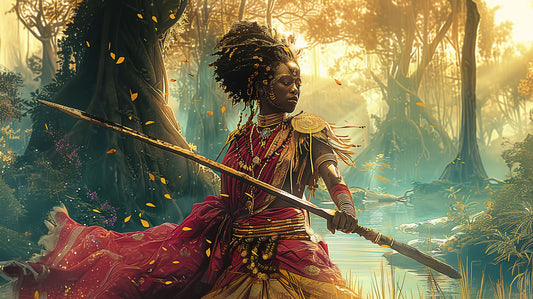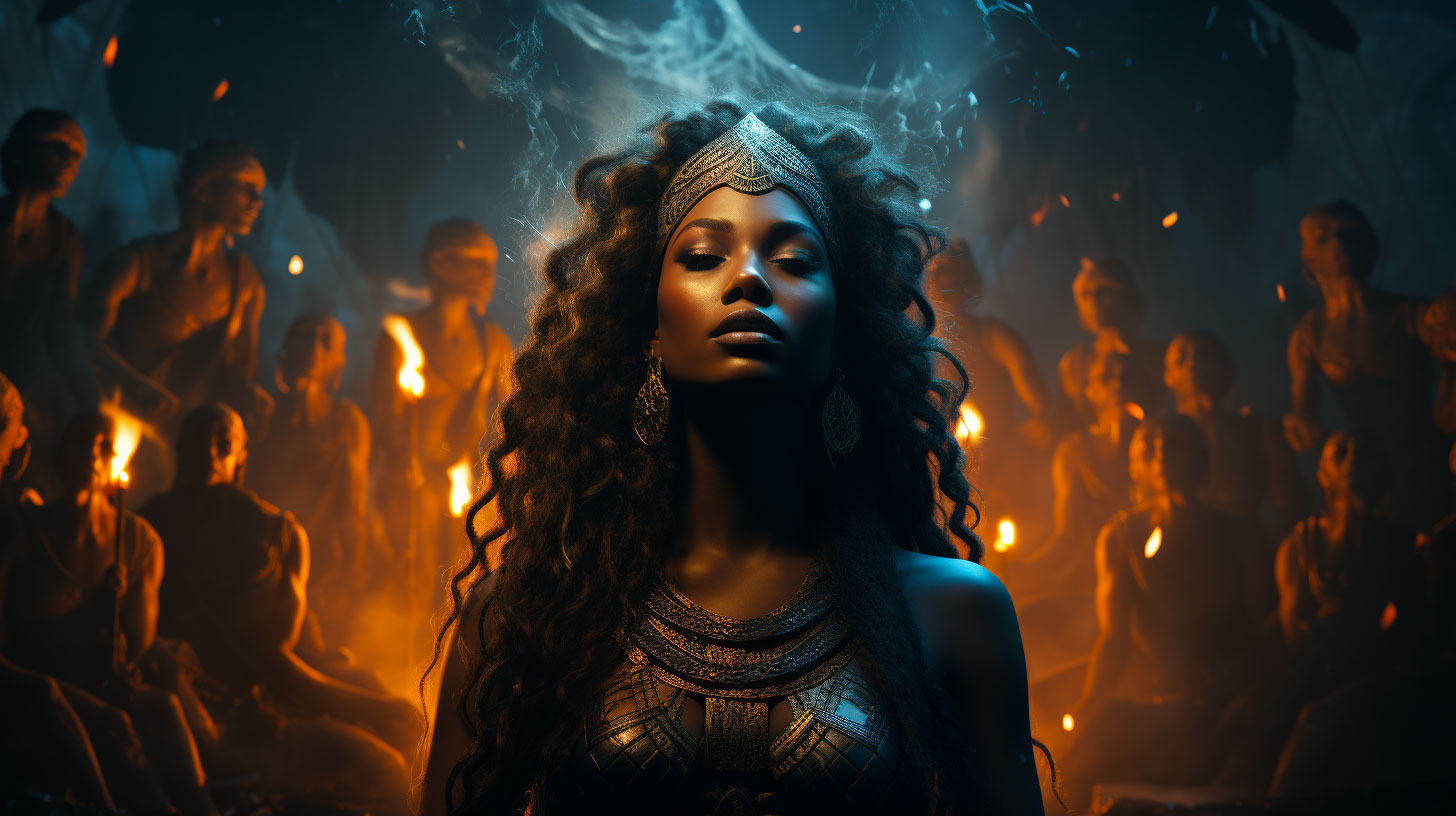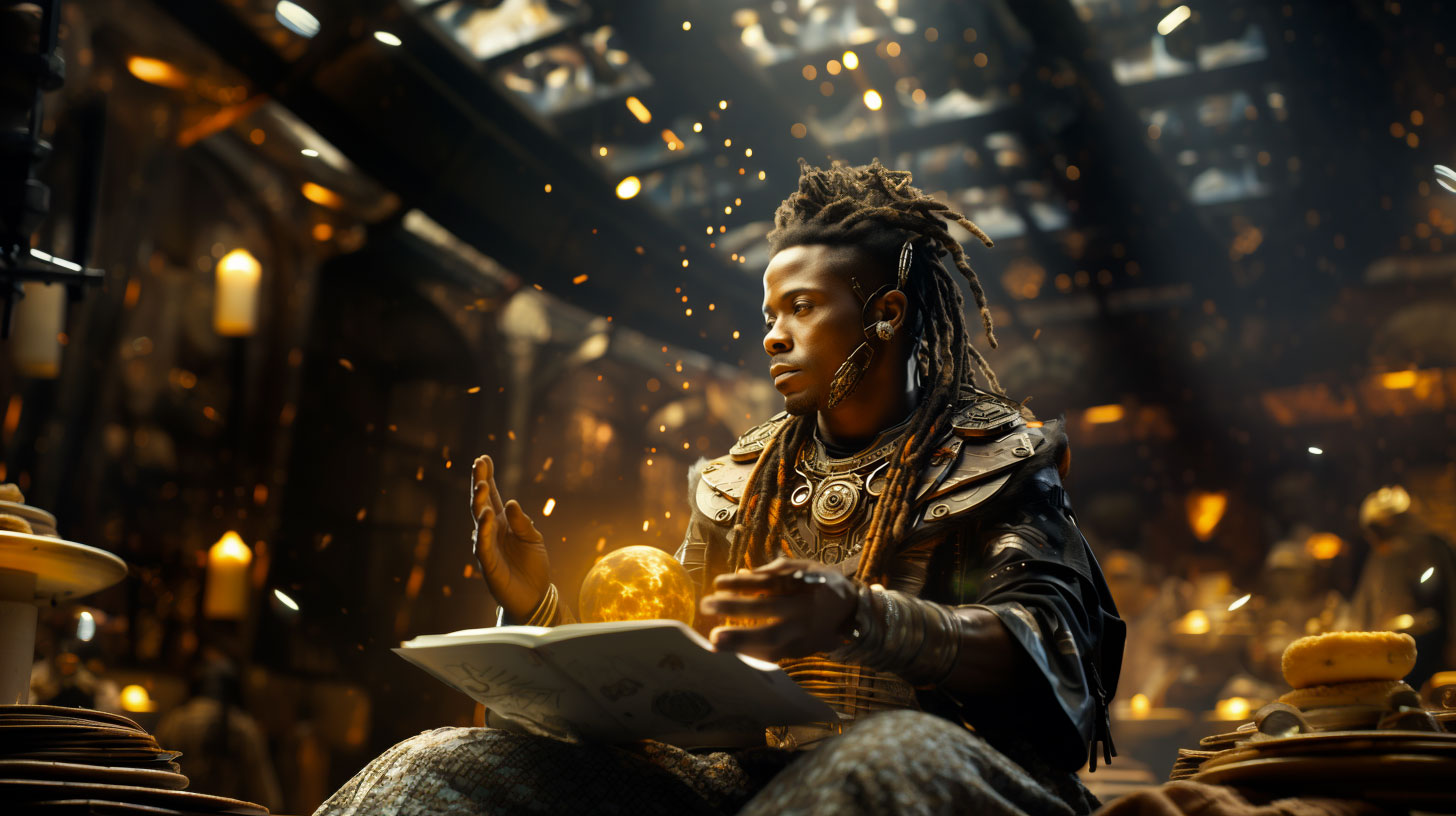Benkos Biohó: Champion of Afro-Colombian Freedom
Gil Santos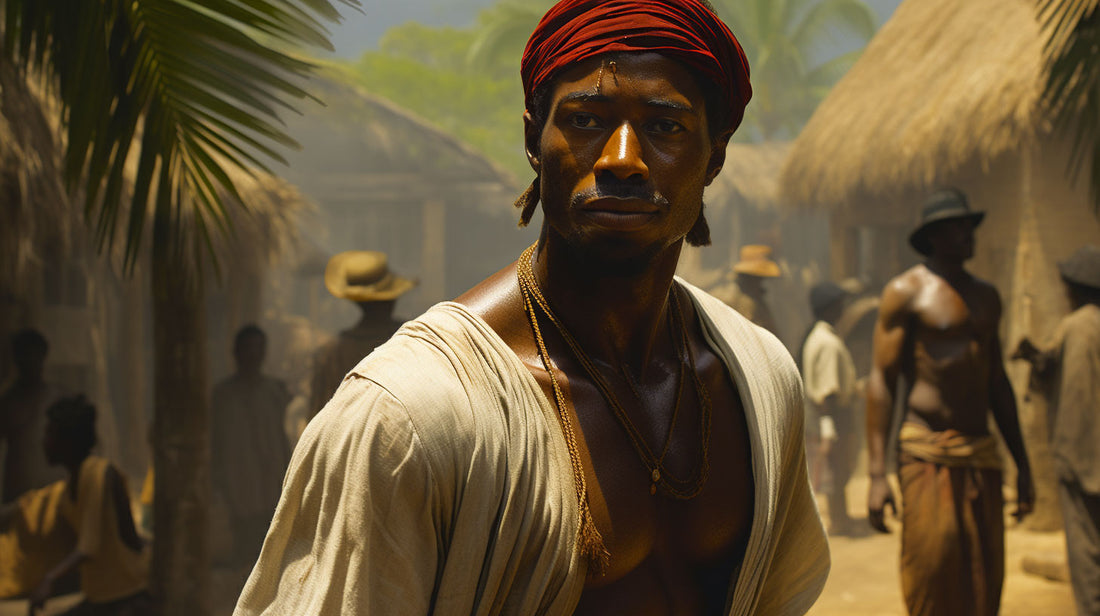
The story of Benkos Biohó significantly contributes to Afro-Colombian history, establishing him as a key character in the historical narrative. His journey from captured African captain to an emblem of freedom encapsulates themes of resistance and liberation that resonate deeply within the human spirit.
This article delves into his profound impact on the region, shedding light on how his quest for peace shaped not only a village but also left an indelible legacy for populations far beyond. From language to statues, from life to death, Benkos Biohó's story is one that continues to inspire and challenge our understanding of what it means to fight for humanity in a world often divided.
Key Takeaways
- Benkos Biohó's story is a powerful example of resistance and leadership, demonstrating how one individual's fight for freedom can inspire a collective movement for change.
- Understanding Biohó's early life and royal Kongo lineage offers insight into his capabilities as a leader and the strategic approaches he employed in the Colombian resistance.
- The establishment of San Basilio de Palenque was a monumental achievement, marking the creation of one of the first free African towns in the Americas and serving as a symbol of self-governance and liberation.
- Biohó's relentless struggle against Spanish colonial forces is comparable to other African descent revolutionaries, highlighting a broader narrative of global resistance and the quest for autonomy.
- The legacy of Benkos Biohó continues to resonate today, embodying the enduring fight for social justice and equality, and influencing Afro-Colombian culture and identity.
- By exploring Biohó's history 400 years later, we can gain a deeper appreciation for the complexities of colonial resistance and the ongoing impact of his movement on contemporary society.
Benkos Biohó: Maroon Leader and Liberator
Leadership Role
Benkos Biohó emerged as a leader among the Maroons. These were communities of escaped slaves in the 17th century. They lived in palenques, or fortified villages. Here they could defend themselves against Spanish forces.
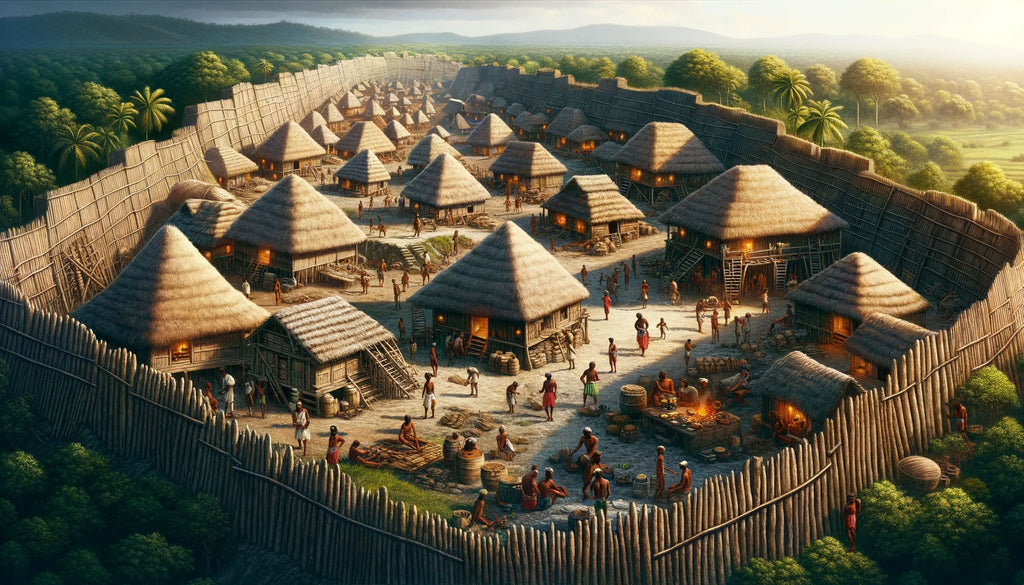
Biohó's leadership was crucial for his people's survival. He organized them into a cohesive group with shared goals. His background as a Mandinka helped him lead effectively. The Mandinka were known for their skills in organization and warfare.
Status as Liberator
Within Afro-Colombian communities, Biohó is hailed as a liberator. He fought relentlessly for freedom from Spanish control. His efforts gave many enslaved Africans hope for liberation.
Resistance Strategies
Biohó used strategic methods to resist Spanish rule.
- He negotiated treaties that recognized Maroon autonomy.
- He also engaged in guerrilla warfare when necessary. These tactics made it difficult for the Spaniards to defeat the Maroons easily.
His strategies showed deep understanding of both diplomacy and combat techniques.
Early Life of Benkos Biohó
African Origins
Benkos Biohó's story begins in Africa, where he was born into a life that would soon be disrupted. His early years were spent on the continent known for its rich cultures and diverse communities. Biohó belonged to a community with traditions and social structures that valued freedom and autonomy.
His life took an abrupt turn when traders captured him. This event marked the end of his freedom. It thrust him into the horrors of the transatlantic slave trade. He was torn from his homeland, never to see it again.
Forced Journey
The journey across the Atlantic was harrowing for Biohó. He endured cramped conditions aboard a slave ship bound for Colombia. The Middle Passage, as this route is known, claimed millions of lives due to brutal treatment and inhumane conditions.
Upon arrival in Cartagena de Indias, which served as a major slave port, Biohó faced new challenges. Here began his life as an enslaved person in South America.
Shaping Actions
These early experiences deeply influenced Benkos Biohó's later actions as a maroon leader and liberator. He witnessed firsthand how enslavers stripped individuals of their dignity and rights.
This injustice fueled his desire for liberation not only for himself but also for others suffering under slavery.
From these trials emerged a resilient leader who would fight tirelessly against oppression. His early struggles laid the foundation for what he would become—a symbol of resistance and hope.
Kongo Royal Roots to Colombian Resistance
Royal Lineage
Benkos Biohó's royal lineage in the Kingdom of Kongo significantly shaped his identity. His noble birth provided him with leadership skills that later became vital. Born into a family with royal connections, Biohó understood governance and strategy from an early age.
His upbringing influenced his ability to organize and lead enslaved Africans in Colombia. A leader by blood, he used these innate qualities to challenge Spanish authority.
This resistance was not just a fight for freedom but also a struggle to preserve dignity and heritage.
Leadership Style
Biohó’s style as a leader mirrored the regal poise expected of someone from royalty. He led with both charisma and intelligence, often outsmarting colonial forces. His tactics included guerrilla warfare and creating fortified communities known as "palenques."
These palenques were safe havens for escaped slaves under Biohó's rule. They operated like independent states, defying Spanish control. Here, Biohó's leadership shone brightest, showcasing his ability to govern effectively outside traditional power structures.
Cultural Transfer
The cultural elements from Kongo did not vanish in Colombia; instead, they thrived under Benkos Biohó’s guidance. The transatlantic journey brought more than people across the ocean; it carried traditions too.
In their new environment:
- Music from Kongo found a home.
- Traditional dances evolved yet retained their roots.
- Language blended into what would become Palenquero Creole.
This fusion created a unique Afro-Colombian culture that persists today—a testament to Benkos Biohó's impact on cultural preservation amidst adversity.
The Rise of Black Conquistadors and Maroons
Emergence of Conquistadors
Black conquistadors emerged during the colonial era. They were often slaves brought to fight alongside Europeans. These blacks played a crucial role in conquests across the New World. Their skills in battle helped expand colonial territories.
Many black soldiers earned their freedom through service. Some became respected figures within colonial societies. However, they still faced discrimination and harsh treatment.
Formation of Maroons
Maroon communities formed as runaway slaves fled oppressive conditions. They sought refuge far from slave ports and plantations. In remote areas like the María Mountains, these groups found safety.
The maroons created self-sufficient societies, blending African traditions with indigenous practices. They resisted re-enslavement fiercely, defending their newfound freedom against colonial authorities.
Biohó's Influence
Benkos Biohó was pivotal in this historical context. A leader among both black conquistadors and maroons, he symbolized resistance against slavery.
Biohó founded San Basilio de Palenque in Colombia, a haven for runaway slaves. His leadership inspired many to seek liberty by escaping the bonds of slavery.
The Founding of San Basilio de Palenque
Safe Haven Creation
Benkos Biohó established San Basilio de Palenque. It was a place where escaped slaves could live free. He founded it in the 17th century, far from Spanish control. This community became a symbol of hope and freedom.
The village was hidden and hard to find. The people built their homes from natural materials. They used what they found around them to survive.
Community Governance
Under Biohó's leadership, they created rules for living together peacefully. Everyone had a role in the community's success. They worked as farmers, healers, or builders.
They also set up ways to defend themselves against attacks. They trained in combat and made plans for safety.
Survival Strategies
Living independently meant finding food without help from the outside world.
- They grew crops like yams and corn.
- Hunting and fishing were important too.
Biohó taught his people how to live off the land wisely. He knew about plants that could heal illnesses or injuries. His knowledge helped many survive tough times.
Symbol of Resistance
San Basilio de Palenque is still known today for its history of resistance. It stands as proof that enslaved people fought back against oppression. The story of Benkos Biohó inspires those who hear it even now.
People visit this town to learn about its past and celebrate its culture. Music, language, and traditions from Africa are kept alive here by descendants of maroons.
Benkos Biohó’s Struggle for Freedom
Personal Fight
Benkos Biohó's quest for liberty was a testament to his resilience. As previously stated, his birth took place within an African royal lineage, he was captured and sold into slavery. In the New World, he escaped bondage and led many others to freedom. His personal struggle mirrored the collective yearning of enslaved Africans.
Biohó created a safe haven in San Basilio de Palenque, where freed slaves could live without fear. This community thrived under his leadership.
However, it also made him a target for Spanish authorities who wanted to maintain control over their human property.
Guerrilla Tactics
To safeguard Palenque's independence, Biohó employed guerrilla warfare techniques against the Spanish forces. He knew the terrain well and used it to his advantage. This allowed him and his followers to launch surprise attacks and evade capture effectively.
The Maroons' resistance strategies were innovative for that era. They included ambushes from dense forests and hit-and-run tactics that confused their adversaries. These methods disrupted Spanish operations significantly but also escalated tensions between Palenque residents and colonial powers.
Capture & Impact
Despite Benkos Biohó's strategic prowess, he eventually fell into enemy hands through betrayal during peace talks with the Spaniards in 1619. His capture dealt a heavy blow to those fighting for autonomy within Maroon communities.
His execution by hanging sent shockwaves across these settlements as they mourned their leader's death yet continued their struggle inspired by his legacy. Biohó became an enduring symbol of resistance against oppression among Afro-Colombians.
His death did not end the fight; rather it ignited an even fiercer determination among Maroons to live freely or die trying.
By recognizing Benkos Biohó’s indomitable spirit despite facing immense challenges like betrayal and eventual execution shows us how one individual can spark change amidst adversity.
Comparing Benkos Biohó to Other African Descent Revolutionaries in the Americas
Historical Context
Benkos Biohó's fight for freedom was not an isolated event. Throughout the Americas, other leaders of African descent also stood against oppression. Zumbi of Palmares in Brazil led a resistance that lasted decades. In Mexico, Gaspar Yanga fought for independence and established a free black settlement.
Biohó created a fortified community called San Basilio de Palenque. This became a safe haven for escaped slaves. Zumbi did something similar with Quilombo dos Palmares, which grew into a multi-ethnic refuge standing against Portuguese colonial forces.
Yanga’s story is equally impressive. He led his people to resist Spanish rule in the early 1600s. They negotiated terms that resulted in one of the first free African townships in America, San Lorenzo de los Negros.
Resistance Tactics
The tactics employed by these leaders varied but shared common goals: freedom and self-determination.
Benkos Biohó cleverly used guerrilla warfare and diplomacy to protect his people. He set up networks of communication between palenques (fortified communities). These strategies helped maintain their autonomy from Spanish control.
Zumbi also utilized guerrilla tactics effectively within rugged terrains of northeastern Brazil. His leadership extended beyond military prowess; he became an icon for cultural resistance as well.
Yanga’s approach included open combat followed by negotiation skills that eventually secured freedoms through formal agreements with Spanish authorities.
Legacy Impact
The legacies left by these revolutionaries have shaped histories and cultures across the Americas.
In Colombia, Benkos Biohó is remembered on March 21st, "Day of Afro-Colombianity." His impact resonates today as his struggle symbolizes ongoing fights against racial discrimination.
Both Zumbi and Gaspar Yanga are national heroes in their respective countries too. Their stories inspire movements advocating racial equality and social justice even centuries later.
Legacy and Symbolism of Benkos Biohó
Enduring Legacy
Benkos Biohó's story is a powerful symbol within Afro-Colombian history. His actions have left an enduring mark on the culture and identity of Colombia's African-descendant population.
His legacy lives in the hearts of many Colombians today. His name represents strength, resistance, and hope for equality.
The town he founded remains significant as the first free African township in the Americas. It is now recognized by UNESCO as a Masterpiece of the Oral and Intangible Heritage of Humanity.
Symbolic Significance
The life of Benkos Biohó holds deep symbolic significance beyond historical facts. He embodies defiance against oppression and injustice in Colombian society.
By leading slave rebellions, he showed immense courage that inspires people even today.
His tale has become a symbol for ongoing struggles against racial inequality globally. As an icon of freedom fighting, his image motivates movements seeking social justice worldwide.
Modern Inspiration
The spirit of Benkos Biohó continues to inspire modern resistance movements around the world. Activists refer to his story when advocating for human rights and equality across different societies.
Groups fighting racial discrimination often look to figures like Biohó as examples of how one can stand up to systemic injustices successfully.
The Ongoing Impact of Benkos Biohó's Movement
Contemporary Relevance
Benkos Biohó's movement remains vital in today’s world. His fight against oppression continues to resonate with many people.
In Colombia, his legacy is a source of pride and inspiration for the Afro-Colombian community. They face ongoing challenges related to discrimination and inequality.
Biohó’s story teaches us about courage and resilience. It encourages individuals to stand up for their rights. This message spreads beyond Colombia, reaching global audiences who are fighting similar battles.
Race and Identity
The legacy of Benkos Biohó sparks important conversations on race and identity. He has become a symbol for racial justice movements around the globe. His life illustrates the struggle against racial hierarchies that still exist today.
In schools, stories like Biohó’s help young people understand historical injustices. They learn how these past events shape present-day issues of race relations.
Resistance Movements
Modern resistance movements draw inspiration from leaders like Benkos Biohó.
- Activists cite his determination when advocating for social change.
- Communities use his example to organize grassroots efforts against injustice.
His spirit lives on in those who refuse to accept inequality as the status quo.
Unraveling the Story of Benkos Biohó 400 Years Later
Historical Significance
The story of Benkos Biohó remains crucial even after four centuries. His life and legacy are more than a chapter in history books. They represent a fight for freedom and dignity. Understanding his journey helps us grasp the struggles against oppression that continue to this day.
Recent years have seen an increase in efforts to uncover details about Biohó's life. Historians and researchers dive into archives, seeking truths buried by time. Their work shines light on forgotten aspects of his story, making it relevant for new generations.
Research Efforts
Scholars tirelessly work to piece together Benkos Biohó's narrative from historical fragments. They scour through old documents, letters, and reports from the era when he lived. Each finding adds color to the picture of who he was and what he stood for.
New research has revealed insights into how Biohó established communities where escaped slaves could live freely. These discoveries underscore his role as a leader who not only fought but also built hope for many.
Preserving Legacy
Remembering Benkos Biohó involves honoring his memory through various means.
- Museums display exhibits dedicated to his impact.
- Cultural events celebrate Afro-Colombian heritage, tracing back to leaders like him.
- Education systems integrate stories like his into curricula, ensuring younger generations learn about these pivotal figures.
Historical memory plays a key role in keeping alive the spirit of what Benkos fought for: equality and autonomy. This collective remembrance is essential not just for Colombia but also globally as we confront similar issues today.
Conclusion
Benkos Biohó's enduring legacy as a leader and liberator is a testament to the resilience and agency of African descent revolutionaries in the Americas. His life, from royal Kongo lineage to the establishment of San Basilio de Palenque, exemplifies a relentless pursuit of freedom against overwhelming odds. The impact of his movement continues to resonate, affirming his place in history not merely as a historical figure but as an enduring symbol of resistance and empowerment. As we reflect on the 400-year saga of Benkos Biohó, it becomes clear that his story is not just a chapter in the past but a beacon for future generations seeking inspiration in the fight for justice and equality.
To honor Biohó’s memory and to continue exploring the rich narratives of African diaspora heroes, readers are encouraged to delve deeper into their histories. Engage with scholarly works, participate in dialogues on cultural heritage, and contribute to preserving these legacies for posterity.
Frequently Asked Questions
Who was Benkos Biohó?
Benkos Biohó was a maroon leader and liberator who founded the community of San Basilio de Palenque in Colombia, leading resistance against Spanish colonial rule.
What is the significance of San Basilio de Palenque?
San Basilio de Palenque, founded by Benkos Biohó, is recognized as the first free African township in the Americas and symbolizes resistance to oppression.
Did Benkos Biohó have royal roots?
Yes, it is believed that Benkos Biohó had royal Kongo ancestry before being enslaved and transported to Colombia.
How did Benkos Biohó contribute to freedom movements?
Biohó led a maroon community that fought for autonomy and rights, inspiring other liberation efforts across the Americas.
Can you compare Benkos Biohó with other revolutionaries?
Benkos Biohó can be compared to other African descent revolutionaries for his leadership in fighting colonial enslavement similar to figures like Toussaint Louverture.
What legacy did Benkos Biohó leave behind?
His legacy includes promoting cultural retention among Afro-Colombians and influencing global narratives on freedom and human rights.
About the Author
Gil Santos
With over 20 years of experience in various narrative mediums, Gil Santos is the singular mind behind Culture Bay. His journey began as a lyricist and web developer, later expanding into crafting dynamic conference presentations and engaging YouTube sketches. This diverse background has allowed him to hone his storytelling skills across different fields. Santos' lifelong passion for sci-fi and fantasy, combined with his knack for interactive storytelling, culminate in Culture Bay - a fusion of innovative ideas and engaging narratives intended for all to enjoy.



